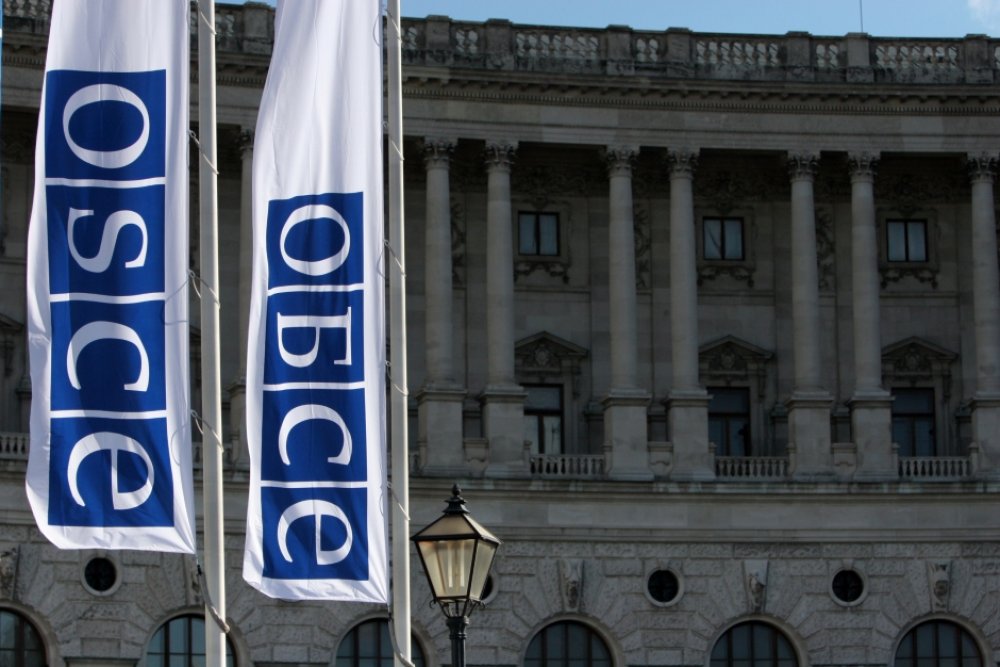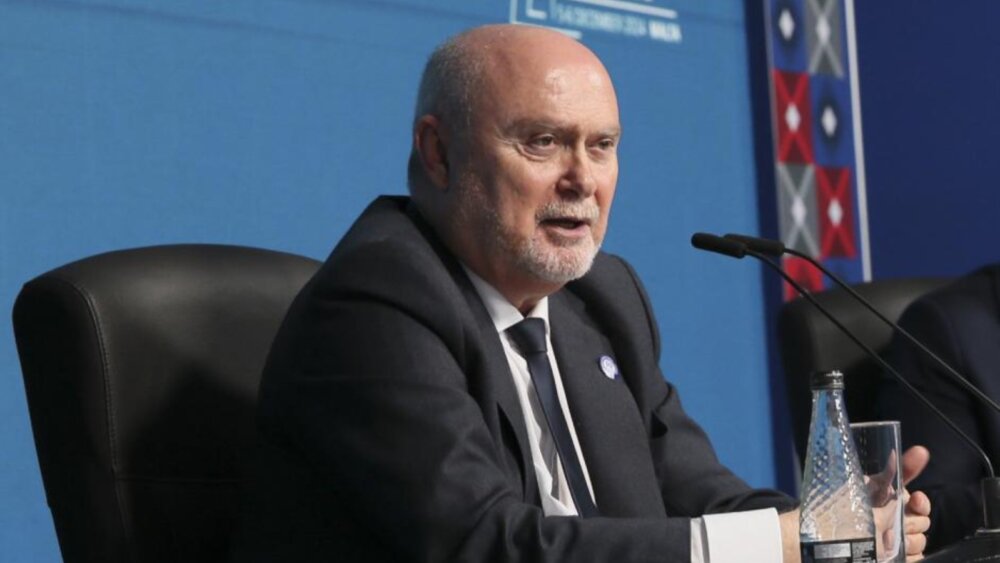ODIHR

How to Train Human Rights Monitors in Ukraine: The ODIHR Way
Introduction
In 2015 the OSCE Office for Democratic Institutions and Human Rights (ODIHR) started a multi-year programme to strengthen dialogue among civil society and with key government stakeholders in order to bolster security in Ukraine. The programme itself consists of numerous smaller projects, focusing on human rights, democratization, and tolerance and non-discrimination. This article will explore the method that was used by ODIHR to build the capacity of civil society organizations in Ukraine to monitor human rights.
On the basis of the OSCE human dimension commitments and by invitation of the Ukrainian government, ODIHR has, since 2014, stepped up its efforts to improve the security situation in Ukraine. After a thorough needs assessment mission, the interdepartmental programme Strengthening dialogue among civil society and with key government stakeholders was set up within ODIHR. In addition, a small local office was set up within the premises of the already existing OSCE Project Co-ordinator in Ukraine (PCU) located in Kiev, in order to support the implementation of the programme on the ground.
ODIHR’s method in Ukraine
A key aspect of the projects under this programme is that each aims to develop a sustainable process of its own. To create such a process, the projects are divided into three successive phases: the first one focusing on building capacity, the second phase on generating a stronger and systematic dialogue among stakeholders and the third on effective action.
Metaphorically speaking, it can be pictured like this: in the first phase you learn how to drive a car by learning theory and taking driving lessons with an instructor. In the second phase you are driving by yourself but your instructor is on hand if needed. In this phase you are also engaging with other cars on the road and are sharing tips on how to reduce your carbon emissions by shifting gears faster. In the final phase you are able to drive independently, reduce your carbon footprint and make more miles on a tank. You also have a network of other drivers with whom you can share information and provide mutual assistance in the future.
The added value of this approach becomes clear when comparing it to a one-time conference or training, where the focus is usually on only one or two of the phases. While these activities alone are a good thing (after all, who would argue, for example, that learning how to reduce your carbon footprint is a bad thing?), what makes this programme so interesting is that it combines all three phases. In the end, the three-phase approach is truly driven by the individual needs of the driver. It is also more sustainable, because the driver has his or her own network of support to seek advice and assistance when needed.
This model formed the basis of the project that started in 2015 and aimed to strengthen the capacities of Ukrainian civil society organizations (CSOs) in human rights monitoring. First, ODIHR built the capacities of Ukrainian CSOs by organizing four human rights monitoring training events, with a specially developed curriculum specifically designed for CSOs with little or no experience in human rights monitoring. More than 80 representatives from CSOs from across Ukraine were trained under this curriculum. During the training, representatives from CSOs also worked with each other and the trainers to learn how to write project proposals on monitoring human rights in Ukraine. To keep the projects limited and realistic in scope, they focused on a local or regional level.
After the training, ODIHR shortlisted 20 of the developed project proposals. The project leaders of the selected projects were invited for further training on human rights monitoring in workshops in Kiev designed to turn their proposals into full-fledged projects that could serve as the basis for a so-called Implementing Partner Agreement (IPA) with ODIHR. In the end, 10 out of these 20 proposals were selected and became the basis for IPAs with ODIHR.
For most of 2016, the Implementing Partners (IPs) carried out human rights monitoring in Ukraine. ODIHR supported the implementation of their projects from the office in Kiev, by offering the IPs the use of a human rights consultant and by visiting the IPs through monitoring visits. At the end of their projects, ODIHR hosted a final workshop for the IPs, where they shared their experiences with each other and also received further training in human rights advocacy on the basis of their monitoring activities.
Results
The use of IPAs was a new experience for me, having joined ODIHR in summer 2016 as a Human Rights Advisor in the Human Rights Department. During the implementation, the usage of IPAs offered a number of benefits. They provided my colleagues and me with the right tools to support IPs from the start to the end of their projects, including on-site assistance during monitoring visits. It offered the IPs enough freedom to be in charge of their own projects, its implementation and its results. This strongly contributed to a sense of ownership. In other words, we could steer IPs in the right direction when needed, while they were ensured of constant support and encouraged to take ownership of their monitoring projects.
This was well illustrated by the experience of one of the IPs that was denied access to a public institution they wanted to monitor because the management of the public body suspected the NGO of working for an international organization. The implementing partner successfully convinced the management that they owned their own project and that its findings were the sole business of the implementing partner and the public body. This also shows how these implementing partners are performing an important monitoring function that contributes to security in Ukraine – by, inter alia, bringing new facts to the table – for which international organizations cannot be a substitute.
Furthermore, having a local office with local knowledge and a human rights consultant on stand-by proved to be instrumental for the implementation of the projects. The availability of a ‘stand-by’ expert in Ukraine to our partners and an office that knew the ins-and-outs of both Ukraine and the OSCE also enabled us to overcome the language barrier as well as the inherent challenges in monitoring and providing assistance from a distance.
Conclusion
Overall it can be said that this model and the projects connected to it, with IPAs at their core, are an effective and promising way to work together with CSOs. All of these NGOs were part of the project from the start, learned how to conduct human rights monitoring and how to write good quality project proposals. They put their knowledge and skills into practice, adjusting their projects when necessary during the implementation phase, and without exception, took ownership and completed their projects.
The most important evidence of the success of the model came from the implementing partners themselves. Between monitoring visits we observed real progress and a solid level of innovation when it comes to monitoring human rights using digital means. This is also what the IPs articulated during the final workshops we organized for them in November 2016.
I remember two instances vividly from this workshop: the level of commitment the organizations demonstrated in putting their newly learned capacities into practice in the future, and their own testimonies of how they felt they now belonged to a community of organizations that share a common understanding of human rights monitoring and experience. The testimonies underlined how the logic behind the project activities had been fruitful and how the work actually contributes to improving security in Ukraine.
Challenges remain in the (near) future. First, how to build the capacities of other Ukrainian NGOs in human rights monitoring based on this model, which, I am convinced, given the positive experiences, is effective in achieving sustainable results. Second, how to further empower this newly established community. As international organizations tend to come and go (and ODIHR is no exception) my hope is that in the next phase of the programme, we can address both challenges by asking the first group of IPs to serve as mentors to a new group of IPs, creating enough critical mass to keep them driving and supporting each other.
*Marc van Gool is a Human Rights Adviser for the OSCE Office for Democratic Institutions and Human Rights (ODIHR). The opinions expressed in this blog are his own, and don’t necessarily represent those of ODIHR.



Comments
* Your email address will not be published